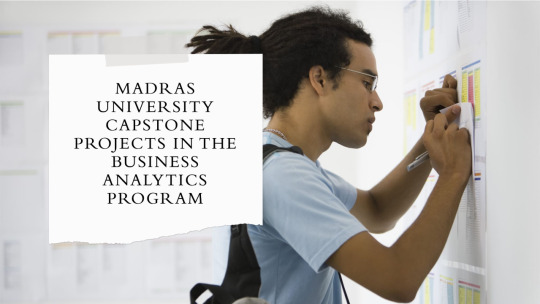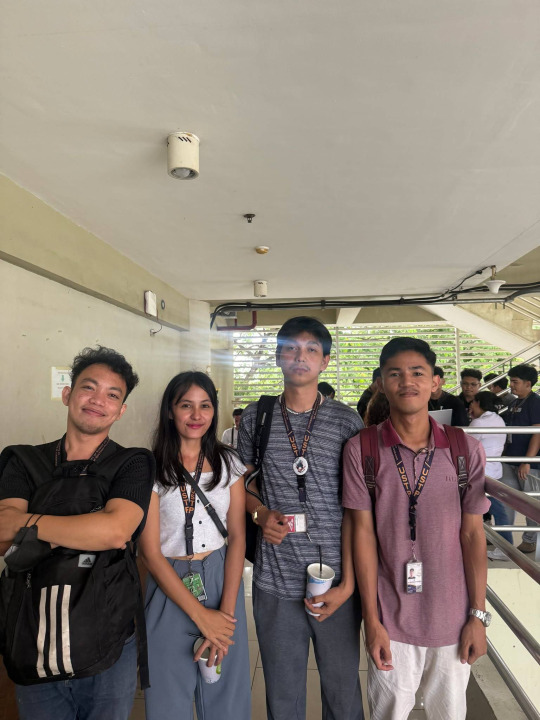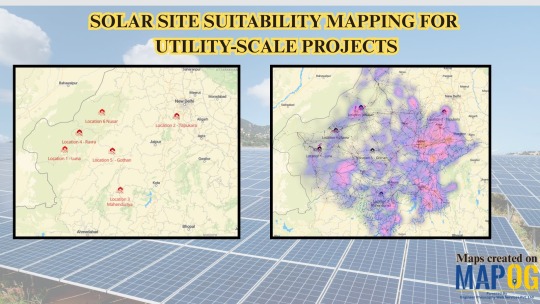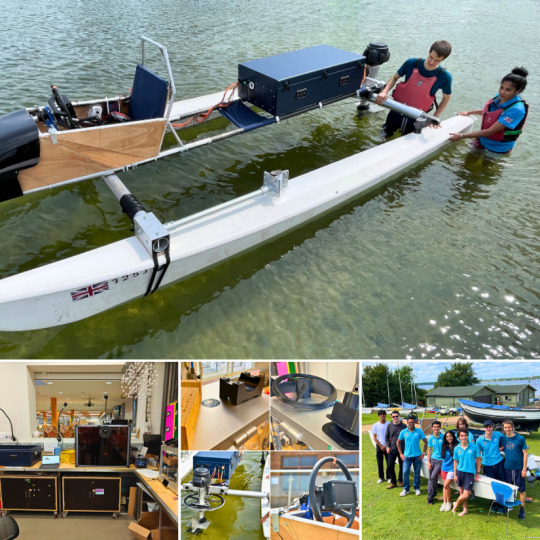#StudentProjects
Explore tagged Tumblr posts
Text
Mapping Hospital Coverage and Categories Using Convex Hull in a State with GIS

Planning effective healthcare in rural regions requires precise mapping of hospital locations and identifying service gaps. A user-friendly GIS platform simplifies this task by allowing users to upload hospital datasets, categorize facilities, and generate Convex Hull polygons to evaluate coverage areas enabling data-driven decisions for better healthcare delivery.
Why Leverage GIS for Healthcare Coverage?
Availability of hospitals is just one part of the equation; their accessibility and distribution are critical. GIS provides clarity by addressing essential questions:
What is the total coverage span of existing hospitals?
Which zones lack essential care or specialized facilities?
Are ambulance services evenly spread across regions?
Academic and Skill Development Benefits
This process offers immense value in education by:
Demonstrating the real-world application of GIS in healthcare
Building data analysis and planning skills
Linking theoretical knowledge with hands-on problem-solving
Step-by-Step Approach
Create a new project and upload hospital data with latitude and longitude. Apply the Convex Hull tool to visualize coverage by choosing Category as the attribute and adding a 500 m buffer. Style and label layers by category for clarity. Repeat the process for Speciality and ambulance availability. Publish the interactive map using “Publish & Share” for integration in reports or dashboards.

Use Case: Planning Mobile Health Units Health departments used to identify remote areas beyond hospital coverage zones. Based on these insights, they deployed mobile health units to bridge gaps in healthcare access. This approach ensured timely primary care for vulnerable populations and reduced the burden on existing hospitals.
Wider Impact Long-Term Effects GIS-based healthcare mapping promotes informed planning, strengthens resource allocation, and encourages collaboration between policymakers, planners, and researchers.
Conclusion By leveraging intuitive GIS workflows, platforms like MAPOG turn raw location data into actionable insights, making healthcare systems more inclusive, efficient, and community-focused.
🌐 From data to decisions—visit the GIS platform and map your logistics network smarter today!
#HealthMapping#GISforGood#MAPOG#HealthcarePlanning#FreeGIS#RuralHealthcare#StudentProjects#SustainableDevelopment#GeographyEducation#SpatialThinking
1 note
·
View note
Text

Update: Cambridge University Riviera Racing team made it to Monaco! 🌊 Salt corrosion cut the final race short, but their progress and spirit are inspiring. We keep sharing their story with the brands in #3Dprinting - projects like this deserve backing.
Full story: https://3dwithus.com/cambridge-university-riviera-racing-prototyping-testing-goals
0 notes
Text

Master Python Full Stack Development with UpShik Academy
Why Learn Python Full Stack Development?
Python Full Stack Development covers everything from the user interface to the server-side logic, database management, and APIs. By mastering both frontend and backend technologies, you can:
Build complete web applications from scratch
Work independently as a freelancer or full stack developer
Gain better job opportunities and higher salaries
Understand how systems interact end-to-end
Create scalable, secure, and efficient software solutions
At UpShik Academy, we offer full project support, training, and documentation to help students, freshers, and professionals gain practical exposure to Python full stack technologies.
#PythonFullStackDevelopment#UpShikAcademy#FullStackProjects#DjangoProjects#WebDevelopment#PythonProjects#AcademicSupport#FinalYearProjects#FullStackWithPython#ProjectHelp#StudentProjects
0 notes
Text
Tourism management system In Java
Looking for a Java project to boost your portfolio? The Tourism Management System Project in Java is a great choice for students and beginners. It includes user and admin login, tour package management, and booking features — all built using Java Swing and file handling. 👉 Download the source code here
#finalyearproject#programming#studentproject#codenewbie#projectsforeveryone#engineeringproject#miniproject#studentprojects
0 notes
Text
#HighSchoolMath#GeometryInAction#GeoZoo#3DShapes#STEMlearning#MathIsFun#HandsOnMath#NetsOfShapes#StudentProjects#EulerFormula#SurfaceArea#VolumeExploration#MathMeetsArt#TiptonBlueDevils
0 notes
Text

How to Choose a Topic for Your Final Year Project?
Selecting a suitable topic for your final year project is of utmost importance as it reflects your skills and knowledge. Here are some key steps to help you choose your perfect topic:
1. Discover your passion
• Certainly mark out an area you love- such as CSE, EEE, VLSI, Embedded Systems, MATLAB, etc.
• Bring to your pencil or electronic pad of subjects from your earlier courses that you think you loved studying.
2. Analyse Industry Trends
• Find out what innovative technologies and advancements are trending in one specific field.
• Study the challenges existing in the world and need solutions among them.
3. Check Feasibility
• Determine if the project, in essence, can be completed in the timeframe stipulated.
• Check if the necessary amount of resources, tools, and hardware/software are available.
4. Consider Career Goals
• Pick a topic that aligns with your future career plan or higher studies.
• A well-selected project should enhance your resume.
5. Past Project Reviews
• Inspiration for future designs can be derived from successful past projects.
• Based on innovation, a previous project can be further refined.
6. Seek Help from a Mentor
• Take suggestions from faculties, professionals or project guides.
• Connect with professionals in a network or a community to discuss ideas.
7. Make it Unique
• Do not pick ideas that have been written about extensively or that are too basic.
• Strive for a unique resolution to contemporary issues.
Follow these steps to select a solid final year project to enhance your skills and career. Looking for project assistance in CSE, EEE, VLSI, Embedded Systems, or even MATLAB? Then Turn to Takeoffprojects: Your expert guide in Tirupati! Contact us now! 🚀
#FinalYearProject#EngineeringProjects#CSEProjects#EEEProjects#VLSIProjects#EmbeddedSystems#MATLABProjects#StudentProjects#TakeoffPROJECTS
0 notes
Text
Madras University Capstone Projects in the Business Analytics Program

Business analytics is a field which is evolving very fast, practical experience is crucial for students to bridge the gap between theoretical knowledge and real-world applications. Recognizing this, Madras University has integrated capstone projects into its business analytics program. These projects allow students to work on real-world problems, applying their skills and knowledge to generate actionable insights. In this blog let us explore the capstone project component, look at examples of past projects, and understand how these projects prepare students for the workforce.
Overview of the Capstone Project Component
The capstone project is a critical component of Madras University's business analytics program. It typically spans the final semester, where students are grouped into teams and tasked with addressing real-world business problems. Here’s how the capstone project component is structured:
1. Project Selection and Partner Collaboration
Students can choose from a range of projects proposed by industry partners, faculty, or even their own ideas. These projects are designed to tackle current challenges faced by businesses, providing students with a relevant and impactful learning experience.
2. Interdisciplinary Approach
Capstone projects often require an interdisciplinary approach, combining knowledge from business analytics, data science, and domain-specific expertise. This ensures that students develop a holistic understanding of the problem and its context.
3. Mentorship and Guidance
Throughout the project, students receive guidance from faculty mentors and industry experts. This mentorship helps students navigate complex challenges, refine their analytical techniques, and ensure their solutions are practical and implementable.
4. Presentation and Evaluation
At the end of the semester, students present their findings and recommendations to a panel of faculty members and industry professionals. This presentation mimics a real-world business setting, preparing students for similar scenarios in their careers.
Examples of Past Projects
Here are some examples of past capstone projects undertaken by students in the business analytics program at Madras University:
1. Sentiment Analysis for Social Media Marketing
A group of students partnered with a digital marketing agency to analyze social media sentiment around a brand's products. They developed a natural language processing (NLP) model to classify customer feedback as positive, negative, or neutral. The insights gained from this analysis helped the brand refine its marketing strategies and enhance customer engagement.
2. Sales Forecasting for Retail Chains
Another team collaborated with a major retail chain to improve their sales forecasting process. They used time series analysis and machine learning algorithms to predict future sales based on historical sales data, seasonal trends, and promotional events. The improved forecasts enabled the retailer to optimize inventory management and reduce stockouts.
How These Projects Prepare Students for the Workforce
The capstone projects at Madras University equip students with several key skills and experiences that are highly valued in the workforce:
1. Practical Problem-Solving Skills
By working on real-world business problems, students learn how to apply analytical techniques to derive meaningful insights and solutions. This hands-on experience is invaluable in preparing them for the complex challenges they will face in their careers.
2. Team Collaboration and Communication
Capstone projects require students to work in teams, fostering collaboration and communication skills. They learn how to divide tasks, leverage each other’s strengths, and effectively communicate their findings to both technical and non-technical stakeholders.
3. Technical Proficiency
Students gain proficiency in using advanced analytical tools and techniques, such as machine learning algorithms, data visualization software, and statistical analysis methods. This technical expertise is essential for business analysts in today’s data-driven world.
4. Industry Exposure and Networking
Working on projects with industry partners provides students with exposure to real business environments and networking opportunities with professionals. This can lead to internships, job offers, and valuable industry connections.
5. Presentation and Persuasion Skills
The final presentation of their projects helps students hone their ability to present complex data and insights clearly and persuasively. This is a critical skill for business analysts who need to convince decision-makers of their recommendations.
Conclusion
The capstone projects in the business analytics program at Madras University offer a wholesome platform for students to apply their academic knowledge to real-world challenges. Through these projects, students develop practical problem-solving skills, technical proficiency, and valuable industry connections. By the time they graduate, they are well-prepared to enter the workforce and make significant contributions to their organizations. The emphasis on real-world applications ensures that Madras University graduates are not only knowledgeable but also experienced and ready to tackle the dynamic challenges of the business analytics field.
#BusinessAnalytics#CapstoneProjects#MadrasUniversity#DataScience#StudentProjects#AnalyticsEducation#RealWorldExperience#CareerDevelopment#IndustryReady#AcademicExcellence
0 notes
Text
Carboneum Concepts

Germany's largest artificial lake will be created after excavating an open-cast mine east of Cottbus. The area between Cottbus Ostsee and the city centre will be developed in a climate-neutral way for leisure, housing, culture, and commerce.
The Carboneum cultural forum is planned in the harbour quarter, featuring exhibitions, education, research, events, and gastronomy. The architectural design and building concept will be climate-neutral and constructed with sustainable materials. The challenge is the traffic connection with the B168 bypass crossing.
What is the future of the open-cast mining site? How do we construct a resilient community where they may improve the quality of life and accomplish a 'brave new world' for future generations with the availability of new technology and ways.
#miningsite#culturalforum#studentprojects#architecture#architektur#sustainable#sustainablemethods#dessauinstituteofarchitecture
0 notes
Text
The Library - CAMERA DEMO 2024
2 notes
·
View notes
Text
Week 14: Moving Forward – Sharing Our Progress and Learning from Feedback
This week marked an important step in our research journey. We presented both our Pet Connect system interface and the current draft of our manuscript during our partial defense. It was a great opportunity to show the progress we’ve made so far and gather valuable insights from our instructors.
During the session, we demonstrated how the Graphical User Interface (GUI) works, highlighting key features, how users can move through the system, and how each part supports our goal of helping pet owners and veterinarians connect more easily. We were glad to receive positive feedback on the flow and structure of the design, as well as suggestions on how to make the interface even clearer and more consistent.
On the academic side, we also walked through our manuscript, explaining the research behind our system, how we planned and built it, and the steps we took to get where we are now. This part helped us better understand the importance of being clear and detailed in both our writing and explanations.
The feedback we received from sir Earl and gave us a clearer direction moving forward. We’re now working as a team to apply their suggestions, refining both the system and the manuscript to make sure everything is aligned and well-prepared for the final submission of our paper.
We’re proud of how far we’ve come and even more motivated to keep improving. One step at a time, we’re getting closer to completing Pet Connect!

0 notes
Text
Solar Site Suitability Mapping for Utility-Scale Projects

Efficient utility-scale solar project planning depends on identifying locations with high solar potential and strong connectivity to the power grid. A free and easy-to-use GIS platform, allows users to visualize and layer crucial spatial data such as Global Horizontal Irradiance (GHI), land use, flood zones, and transmission infrastructure to guide informed decision-making.
Why GIS for Solar Planning?
Not all sunlit land is viable for solar development. GIS allows users to answer essential questions like:
Are the target parcels located in high-GHI zones?
Are they safe from flood risks and near existing powerlines?
By using spatial filters and buffers, planners can eliminate unsuitable locations and focus on areas that are technically sound and logistically accessible.
Educational Significance
This exercise improves:
Application of theory to real-world energy planning
Spatial reasoning and geospatial literacy
Understanding of how GIS supports sustainable infrastructure
Step-by-Step Methodology
Start by creating a new story. Load key base layers like administrative boundaries, industrial land parcels, flood-prone areas, and transmission lines. Upload the GHI dataset and apply a heat map style to visualize solar intensity. Use buffer tools to define 2 km zones around rivers and 500 m zones around powerlines. Merge the buffers using merge polygon and apply filters to eliminate land parcels within flood zones or those far from the grid. Identify six high-GHI locations from the filtered results and mark them manually. Using “Add story” add points and add attributes such as GHI value, site name, and a brief description. Customize point icons and labels, then publish and share the final map using export features.

Use Case: Government-Led Solar Expansion for Industrial Parks
A state government launched an initiative to promote renewable energy adoption across its industrial parks. Planners evaluated land parcels across several districts by overlaying GHI, land use, and infrastructure data. After applying buffers and filters, they identified multiple sites ideal for solar installations within government-owned industrial zones. These findings supported investment proposals and policy decisions, accelerating the state’s green energy goals.
Wider Impact
Solar site suitability mapping with GIS strengthens clean energy transitions, minimizes environmental risks, and enhances collaboration among academic, private, and public stakeholders.
Conclusion
By combining intuitive GIS tools with structured spatial analysis, platforms like MAPOG enables data-driven solar planning that is efficient, inclusive, and scalable. It transforms raw location data into meaningful insights for real-world energy solutions.
#SolarMapping#GISforGood#MAPOG#CleanEnergy#FreeGIS#RuralElectrification#StudentProjects#SustainableDevelopment#GeographyEducation#SpatialThinking
1 note
·
View note
Text

Cambridge University Riviera Racing: Prototyping, Testing, Goals
✍ Article: https://3dwithus.com/cambridge-university-riviera-racing-prototyping-testing-goals
🎥 Short: https://www.youtube.com/shorts/ktiiCHKNjlA?feature=share
0 notes
Text
Blog#13: Creating the Logo for Our Medical Ticketing System
Every system needs a name—but more than that, it needs an identity. Today, we took a creative turn in our project journey and started working on the logo for our medical ticketing system. And let me tell you—it's more than just shapes and colors.
We wanted a design that captures the essence of what this system stands for: Efficiency – A digital system that speeds up patient flow Care – At the heart of healthcare is compassion Technology with a purpose – Not just modern, but meaningful
We explored ideas like:
A cross symbol, representing medical care
A ticket icon to highlight the queueing system
Clean, modern lines and soothing colors like blue and green for calmness and trust
Maybe even a subtle clock or heartbeat symbol to show the value of time and urgency in healthcare
Designing this logo is more than just a graphic task. It’s about translating our vision into a visual—something people will remember, trust, and associate with better healthcare experiences.
It's still a work in progress, but just seeing the concept take form feels exciting. From research and diagrams to design and branding, this project is shaping up to be something truly meaningful. Can’t wait to show the final version soon!
0 notes
Text
ArchiveAlchemy & It's Purpose
First, some things about me;
Hello, my name is Kallie Harris and I am a University Student, majoring in Art History and minoring in Anthropology. I enjoy anything that pertains to the Middle Ages, specifically Europe during the Middle Ages. I have always been fascinated with mythical creatures, often sneaking into my older brothers' room to look at his many fantastical books on cyclops' and giant serpents, or about various mythologies. My favorite movie growing up was The Last Unicorn, and it still remains one of my all time favorites. But I think the thing that solidified my interest the most, was my first Art History class in community college. We had a very, very brief section dedicated to Medieval Marginalia. I remember reading an article (which I will link at the end), and running to show my mom and dad to show the pure silliness and stupidity of each image, and laughing with them about the drawings of tress with penises and hares killing men. After that, it felt like I had really found something that I wanted to stick to forever, something that was mystical, that didn't seem so terribly serious. I've always had a habit of being in my own world, believing in magic and superstitions, so to find something that felt so whimsical and in a way familiar, felt like I was finding a piece of my purpose.
Pertaining to The blog;
I will make several posts each week, with images or media that I find interesting and/or inspiring. I will write a reflection/description to the pieces, as well as cite the artist or source which it comes from. I doubt all of these images will be linked to or inspired by the Middle Ages, due to the fact that I do in fact have other interests (lol). But, do not be surprised if images/media I post that seems like it's inspired by the Middle Ages is frequent.
I believe that is all I want to cover, If you stumble across this blog and decide to stick around, I appreciate it. I do plan on running this blog even after I finish this class, and I may even include some of my art from my personal work or from this class that I am proud of.
Thank You :)
#university#studentproject#student artist#art archive#archive#art history#art#artwork#middle ages#medieval#medieval art#marginalia#unicorns#mythical creatures#the last unicorn
1 note
·
View note
Text
Billing-System-Project-in-Java-Swing-with-Source-Code
Looking to build a practical desktop application in Java? Check out this Billing System Project in Java Swing, perfect for students and beginners. It features a user-friendly GUI, automatic bill calculation, and printable invoices — all built with core Java and Swing. Ideal for learning or academic submission! 👉 Download the source code here
#finalyearproject#programming#studentproject#codenewbie#engineeringproject#miniproject#projectsforeveryone#studentprojects
0 notes
Text
Showcasing a creative student project featuring detailed and stunning interior design concepts. Student project! For Details: 🌐 www.solidcad.org 📌 Kottayam, Changanacherry, Kochi ☎ +91 9562261281, +91 7560989347
#StudentProject#InteriorDesign#CreativeDesign#ExteriorDesign#Revit#Lumion#ArchitectureVisualization#Solidcad
0 notes